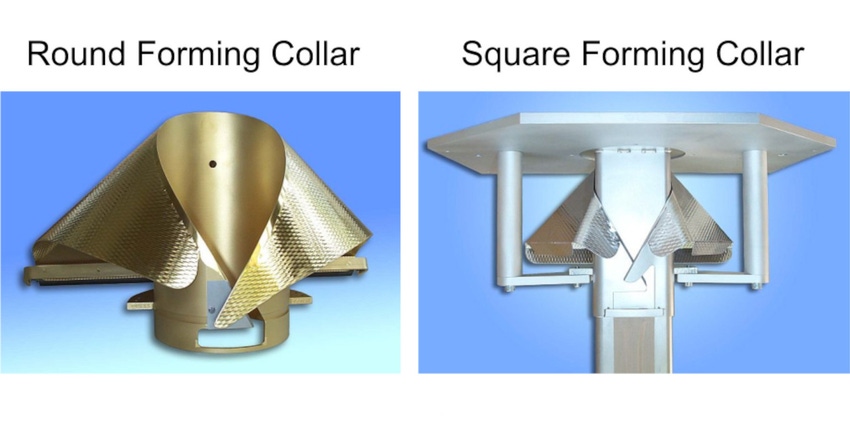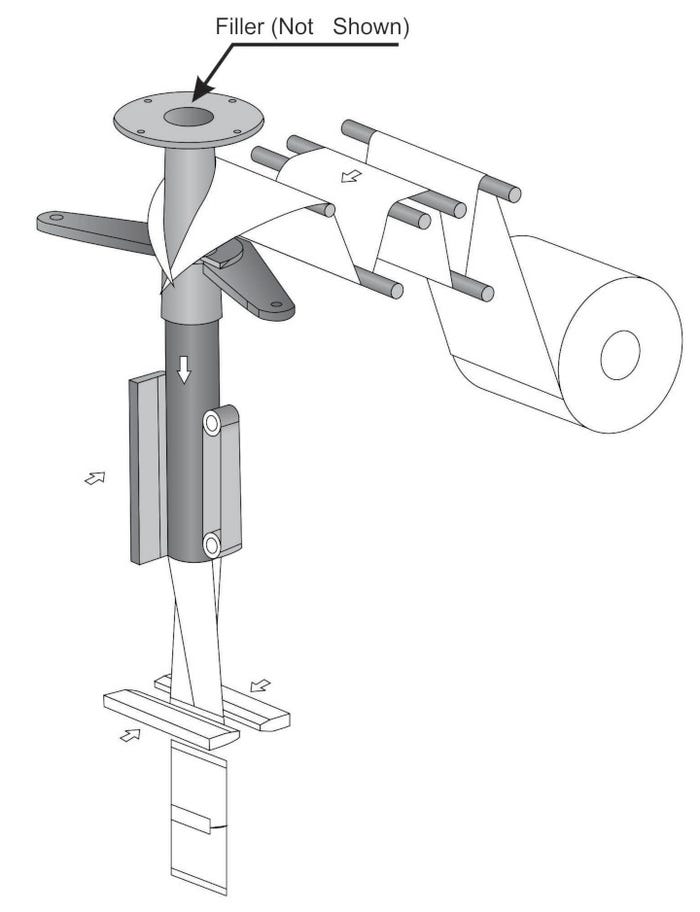Explaining how to make the popular pillow bag on a VFFS system showcases the basic operation of this workhorse packaging machine.
March 2, 2023

Pillow bags, as they are commonly called, are the most common of all flexible packages. They are produced on vertical form-fill-seal (VFFS) machines. They are simple, cost effective, and can fill liquids and solids in volumes from less than an ounce to multiple gallons. They are called “pillow” bags because they often look like a pillow. They also act like a pillow. Contrary to popular belief, the excess air in the bags is to protect the product, not to fool the customer about the amount of product inside.

Films can be any heat sealable material. Single layer and multi-layer films are common. Film can be registered, in a continuous print pattern, or blank. Continuous print or blank film may be run on most VFFS machines. Film with a registered print requires additional sensors to maintain registration.
Generally, films are heat sealed but ultrasonic and other sealing methods are sometimes used.
How VFFS systems work.
Flat film on rolls is brought to the machine and loaded on an unwind axle. As the film is pulled through the machine, dancer rolls, tensioning brakes, unwind motors, or other means maintain a consistent tension on the film. Inconsistent film tension is a major cause of problems with VFFS baggers.

The film is brought over the forming collar and filling tube. The collar forms the film around the tube. In most cases, the tube is round but oval, square, or rectangular tubes may be used depending on the final bag configuration (see image at top of page). Guides form the edges of the film into either an overlapping or, more commonly, a fin seal (a center seal along the back of the bag). Heated jaws press the film together, sealing the plastic inner coating to itself.
The systems often operate in intermittent motion for filling/sealing, but continuous motions machines are common, as well, to run at higher speeds.
Most modern machines use a pair of servo-driven belts or wheels that compress the sides of the film tube against the sides of the forming tube and pull the film down. Bag length is controlled by the servo motors either by revolutions (continuous print) or by sensing a registration mark on the film (registered print).
Below the forming tube, a pair of jaws close on the film. These jaws contain two sets of jaws.

They seal the top of the filled bag as well as the bottom of the bag being filled. A knife between the jaws cuts the bags apart. As the filled bag drops out of the machine, the upper bag is now ready for filling. An appropriate filling mechanism dispenses the product down the forming tube and into the open-top bag.
Repeat thousands of times per hour.
It’s easy when you know.
Find out more about how Vertical Form-Fill-Seal baggers work in my Packaging Machinery Handbook, which can be purchased on Amazon at https://amzn.to/3kr4qj
About the Author(s)
You May Also Like


